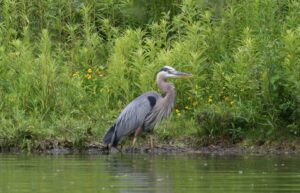Andebit et beaqui corendit, ut quostes esciendion re dit ad et prae parion es quia quas alibus sam, omnim faciden ducipidiat arum autem nobis enis es voat

Nature

Ancient sedimentary rocks, laid down nearly 500 million years ago and compressed into limestone, schist, and dolostone, make up the islands of Lake Champlain. Over 450 million years ago, a shallow tropical sea covered the present-day Lake Champlain Valley. The sandy beach solidified into sandstone. In some places, the sandstone preserves the ripples formed by shoreline waves; in others, the ripples record the action of a stream, with the steep slope of each ripple indicating the direction of flow. Marine creatures that drifted to the ocean floor calcified into the other local bedrock. Limestone layers named Chazy or Beekmantown or Crown Point, record the places where geologists first identified the particular formations, known as type sections. Curious visitors can find rock containing beautifully preserved fossils of giant snails (gastropods), trilobites, and other sea life around the lake, anywhere weather, waves or waterfalls have broken apart this evenly stratified gray/blue rock. Fossil hunters must not remove rocks from beaches on state land such as those on Valcour or Crab Island because they are held in public trust.
Cathy Frank and Margaret Holden noticed the fossils on their trip when writing A Kayaker’s Guide to Lake Champlain:
“Meanwhile, Margy looks down at her left hand and lets out a yelp. We are sitting on fossils that are millions of years old. Valcour is made of the same 460-million-year-old limestone that is found at Fisk Quarry and Goodsell Ridge in Isle La Motte. Fossils abound. So, like two kids on a treasure hunt, we spend another hour or so scrambling along the shore, oohing and aahing at each new fossil find.
Lake Champlain has numerous species of freshwater fish including lake trout, brown trout, steelhead, salmon, smelt, walleye, bass, northern pike, pickerel and perch. A fishing license is required. There are a great number of birds such as red-wing blackbirds, hawks, killdeer, kingfishers, osprey, peregrine falcons, bald eagles and waterfowl. A great blue heron rookery is located on Valcour Island. White-tailed deer and many small mammals can be found on Valcour Island.”
On Valcour Island is a great blue heron rookery and osprey and peregrine falcon nesting sites. Rare flora and a great diversity of other wildlife may also be found. Frank and Holden described seeing the great blue heron:
“Eventually we find ourselves once again back in the northwest wind headed up to Bluff Point Cove. A great blue heron flies by and lands inland on a tall, dead tree, part of a once large heron rookery. Like other rookeries on the lake, this one appears to wax and wane. The heron blends so well with the tree that it looks like another branch. Realizing this, we look more closely at the entire grove of dead trees and discover many more herons perched on the higher branches. Nature’s camouflage has done its work.”
Watchable Wildlife, Inc has this to say about Ausable Marsh, the southern-most recommended launch for Valcour Island, worthy of a trip in itself:
“The Ausable Marsh Wildlife Management Area is managed by NYSDEC for a variety of purposes, including: education, wildlife observation and photography, fishing, trapping, hunting, and canoeing. One of the primary objectives is to provide nesting and feeding habitat to a variety of waterfowl. Wildlife habitats range from marsh and sandy dunes to floodplain forest, supporting many types of fish and wildlife. NYSDEC has built dikes and other water features that enhance the nesting and feeding habitat for migrating waterfowl. Look for black ducks, mallards, mergansers, teal and common goldeneyes. In addition, nest boxes erected throughout the area mimic the natural tree cavities used by the exquisitely marked wood duck. Canada geese are also regular migrants to the area.
Look for great blue herons feeding on fish and the many frogs that leap into the water as you walk along. Northern pike, largemouth bass and landlocked Atlantic salmon provide tasty meals for ospreys, a threatened bird-of-prey in New York. Two osprey nest platforms are excellent places to see these uncommon birds, which have successfully bred and raised young here.
A visit between December and March may reward you with a bald eagle sighting. During warm months, songbirds including the eastern bluebird (our state bird) frequent adjacent fields, woodlands and marsh edges. The water and its margins are also home to beavers, muskrats and snapping turtles.”


